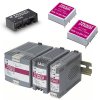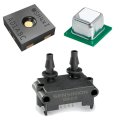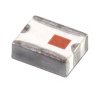Advantages of Technological Advances in Medicine
The interconnection of healthcare and the latest technologies could lead to amazing results.
The global COVID-19 pandemic has accelerated the process of creating new medical technologies, created countless challenges in the healthcare sector, but at the same time, it has also created great opportunities for innovators and investors. Overall, funding of health technology organizations has reached record levels and there are no signs of a slowdown. (Source) |
What could investments in innovations of digital technologies in medicine and healthcare do?
- Provide more affordable, faster, and effective diagnosis and treatment of various diseases.
- Reduce the burden on public finances in the provision of health care.
- Provide timely assistance in the treatment of very serious diseases such as cancer, AIDS, and others.
- Help make unsustainable healthcare systems sustainable. (According to the conclusions of the 2006 EU Council of Health Ministers)
- Make the communication and relations between healthcare professionals and patients more effective.
By using digital technologies, we can not only improve our health and prolong our lives. At the same time, we are changing our attitudes towards health as such, medicine, as well as healthcare.
Artificial Intelligence – “The Key to Medical Progress ”
Artificial Intelligence (AI) can completely restructure the healthcare system because AI algorithms can easily analyze multiple medical records, prepare treatment plans, create drugs more quickly, and warn of potential threats that were previously unexpected complications. Here are some examples:
- Startup Chematria initiated a virtual search for safe current drugs that can be adapted to treat the Ebola virus of 2015. The AI algorithm has discovered two drugs that could significantly reduce Ebola infectivity.
- Google Deep Mind recently developed AI for breast cancer analysis. This algorithm outperformed all human radiologists in identifying breast cancer on pre-selected data sets by 11.5 percent.
 3D Print
3D Print

Innovative medical solutions of 3D printing seem to be very attractive in the field of healthcare, mainly due to their potential to improve surgical procedures of some health complications. Perfect replicas of not only heart, spine, or tooth defects, but any replaceable parts of the human body offer broader solutions within the unique anatomy of a patient.
The pioneering biotechnological company BIOLIFE4D, which focuses on tissue engineering, recently announced that they can use 3D bioprinting to create a viable human heart suitable for transplantation. The discovery of 3D printing of nerve probes and other electronic devices that are soft and flexible like rubber will help engineers create 3D replicas of soft rubber brain implants, thus enabling the rapid design of softer and safer nerve devices capable of treating brain diseases on demand.
Computer interfaces could certainly bring a revolution in the healthcare industry and a general improvement in health. Neuralink anticipates that in the future, the BCI (brain-computer interface) will allow us to control computers with our minds, which would not only mitigate the threat posed by improving artificial intelligence, but it would also help us better understand and treat complicated brain disorders.
According to the World Health Organization, more than 40 million people in the world suffer from blindness and therefore, creating the perfect replacement for the human eye is one of the hottest topics in modern science. One of the most significant shifts was recorded by researchers from the University of Minnesota, who created an array of light receptors on the hemispherical surface using multi-material 3D printing. This discovery represents a significant step towards the creation of a "bionic eye". The revolutionary nature of this discovery lies in the fact that, unlike the currently used eye prosthesis, which replaces only the physical structure and appearance of the eye, the bionic eye functions fully within the existing structures of the eye and brain. The eye that has been created by scientists contains photodiodes that convert light into electricity with 25 percent efficiency.
3D printing thus seems to become very promising in many areas of medicine.
Self-Diagnosis Through Selfie
The cameras of today's smartphones are no longer just for taking selfie photos. They have become very good evaluation devices that are able not only to diagnose various diseases but also to transmit detailed medical data about the patient directly to the medical staff.
The University of Washington has developed the BiliScreen app, which allows you to use selfie photography to detect a variety of diseases, including pancreatic cancer, which has one of the worst survival rates out of all cancer forms, as its symptoms appear later in the disease. The application technology focuses on scanning the patient's eyes and subsequent estimation of the bilirubin level. For example, a disease like hepatitis could be recognized by the naked eye only in later stages, but a test using computer vision and machine learning can detect even its milder forms.
Micro-Electro-Mechanical Systems (MEMS)
MEMS components are used in diagnostic, monitoring, surgical and therapeutic devices in a wide range of medical applications.
Currently, the sensor technology enables innovative features such as accurate breath and airflow monitoring to control airway pressure during respiratory support, intelligent inhalers that monitor the status and dosing of drugs for asthma patients, or extremely accurate control of gas mixtures and their concentration (O₂, N₂O) during anesthesia.
The sensors are also used to monitor the pump flow and to detect errors such as air bubbles or infiltration, which contributes to the maximum safety and comfort of a patient. Continuous measurement of urine flow using high-precision sensors also allows early detection of acute renal failure of critically ill patients.
Sensirion manufactures sensors with such a high level of accuracy that they can detect even the smallest deviations in flow rate. When they are connected to an infusion set, the sensor can even actually feel the patient's heartbeat.
 Flow Measurement in Smart Inhalers
Flow Measurement in Smart Inhalers

Studies have found that in the case of inhalers, the most frequently used devices for the treatment of respiratory diseases such as asthma and chronic obstructive pulmonary disease (COPD), the patients make at least one mistake when administering an inhaling medicine in up to 70% to 90% of cases and that the costs of the health care in the case of an uncontrolled patient is more than a double compared to the controlled patient.
The opportunity for technological innovation to reduce these common errors by measuring the patient’s airflow during inhaling through the inhalation device is already available and allows for increased drug delivery efficiency, improved treatment adherence, reduced healthcare costs, and ultimately improved patient’s condition.
Although many of these technologies still have some limitations in practice, it is more than clear that scientists will focus on improving them in the future. However, the innovative solutions will also focus on the improvement of already known medical accessories, such as basic ambulance equipment, rehabilitation devices, laboratory analyzers, special lighting, ozone generators, incubators, but also the control of general hygiene in hospitals.

Products For Medical Applications and Devices
Our company, SOS electronic, as a multinational distributor of electronic components, has long-term cooperation with global manufacturers of components for medical applications. We can therefore design a complex solution for your development and production of medical devices using components that meet the highest standards in terms of quality and reliability:
- medically certified power supplies, amplified DC/DC converters,
- communication modules with low power consumption, antennas,
- quality EMI filters,
- the most reliable humidity and temperature sensors, weight and liquid flow meters,
- durable buttons, powerful LED and fans of the highest quality,
- smart displays and high-performance batteries,
- powerful industrial computers and embedded systems,
- RFID products, RF modules, reliable speakers,
- components for laboratory analyzers,
- semiconductors, connectors, enclosures, cables, etc.
All these and many other "invisible" components contribute in some way to the modernization of technology in the medical sector. Moreover, proven product solutions help you develop safe and reliable medical applications.
If you are interested in or are already preparing a solution in one of the above-mentioned areas, do not hesitate to contact us at sales@soselectronic.com.
Do you like our articles? Do not miss any of them! You do not have to worry about anything, we will arrange delivery to you.








